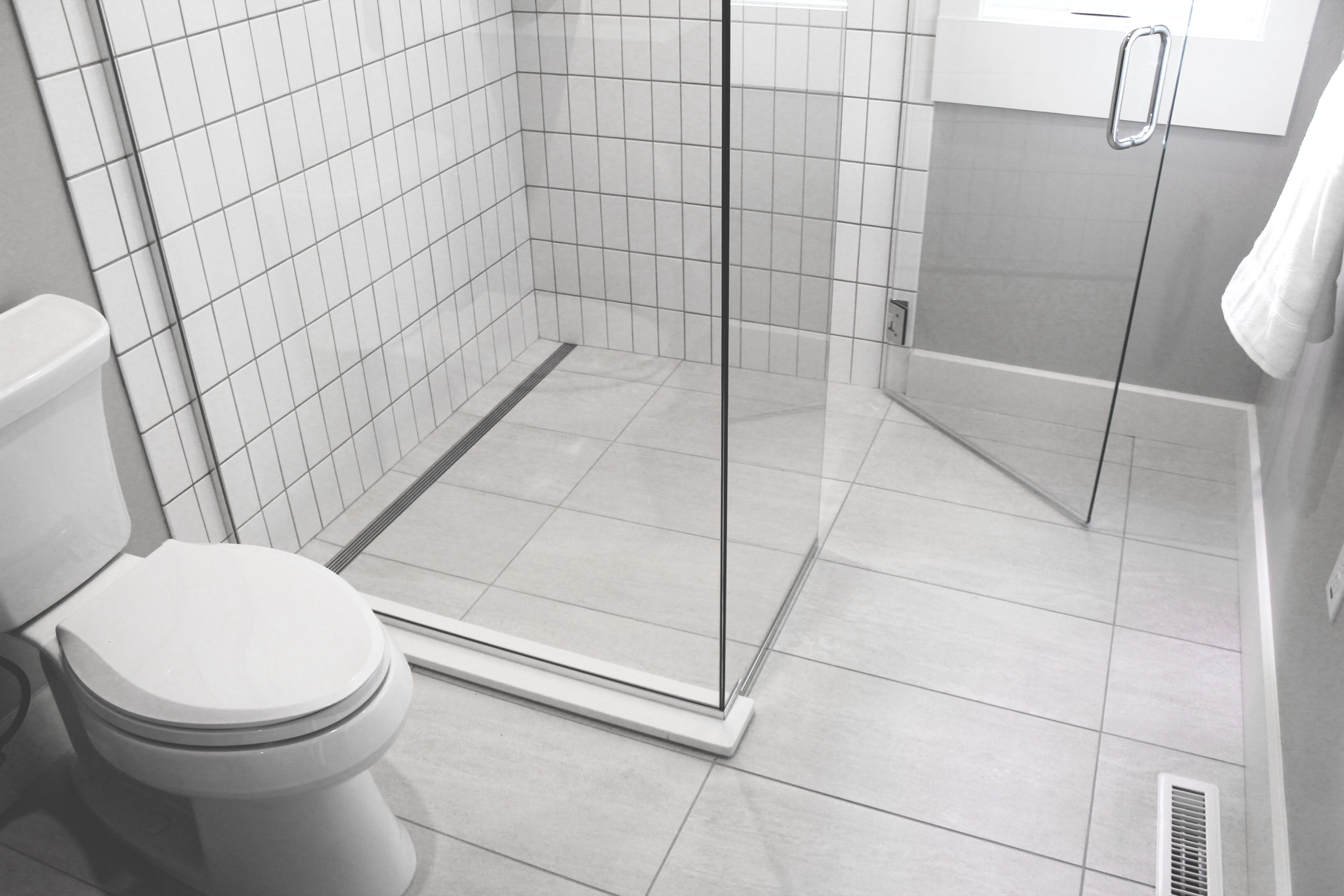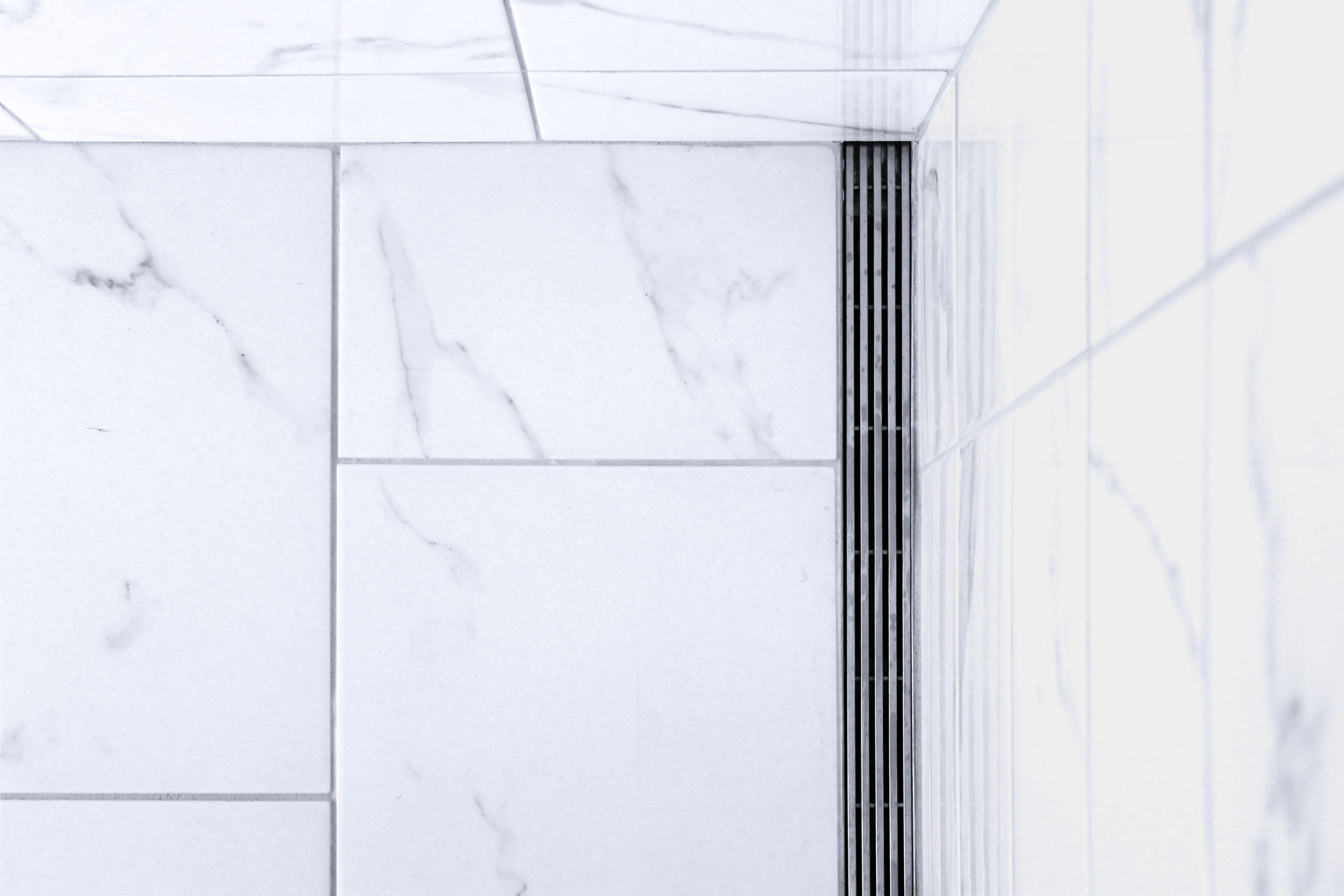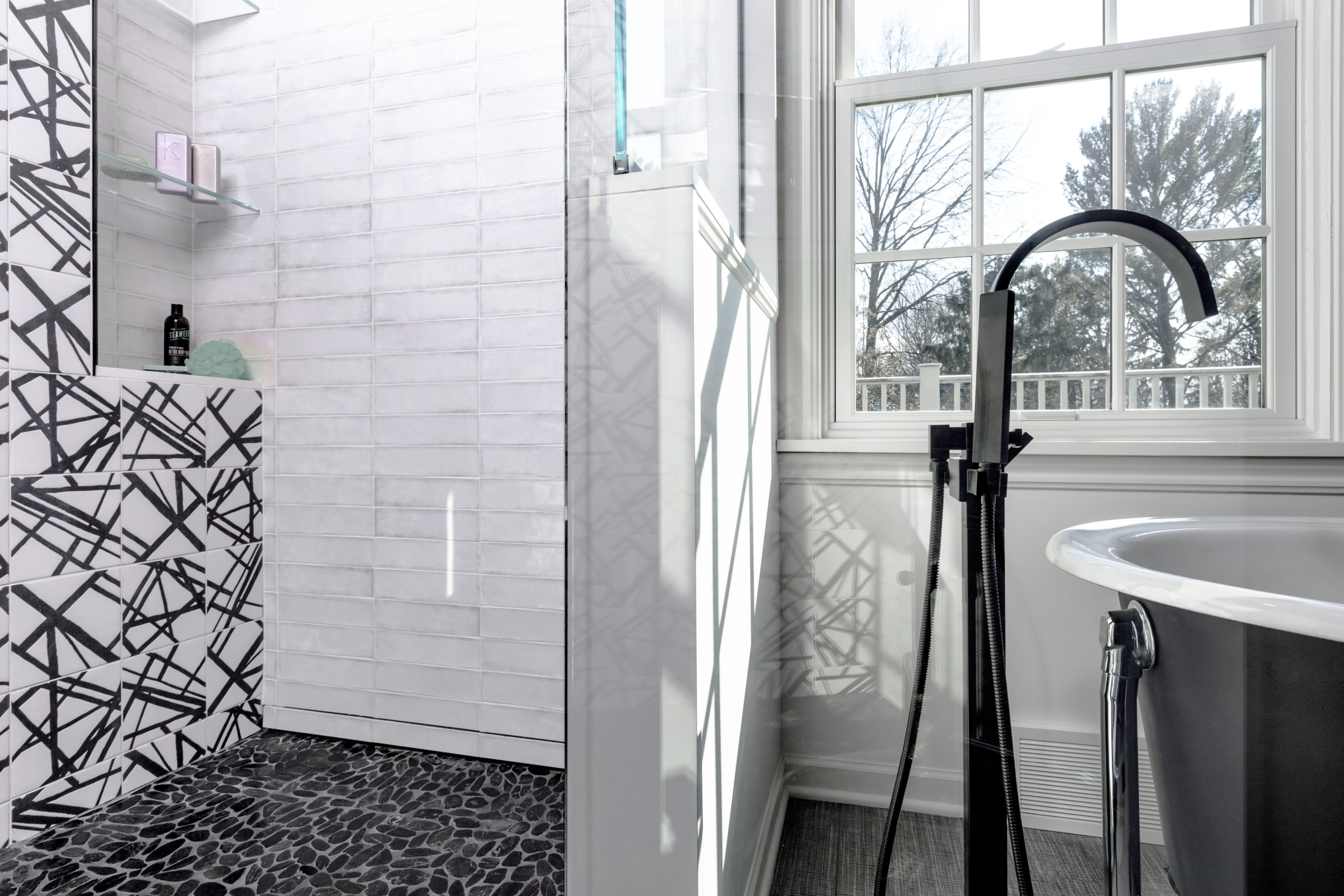Bathroom design has been trending towards minimalism for years. The sleek, cleanly-detailed spaces once seen only in glossy magazines now don’t appear out of place in even the most unassuming homes or businesses. This tendency, driven by a desire to view the bathroom as a space for regeneration as opposed to routine, has driven many architects to master the tenets of minimalist bathroom design.
For architects looking to cultivate a minimalist aesthetic, one of the most important strategies they can employ is to eliminate visual clutter, casting a bathroom’s separate elements as part of a single, seamless space. Two simple but impactful ways to do this are by utilizing curbless showers and equipping them with a low-profile, linear drain, either on the floor or set in the wall.

An example of a curbless shower featuring QuickDrain’s ShowerLine linear shower drain; image courtesy QuickDrain
While a curbless shower may sound like a flood waiting to happen, this challenge can easily be handled through careful detailing. Most importantly, eliminating a shower curb enables the significant benefit of allowing a home’s residents to age in place. Accommodating wheelchair use or limited mobility is increasingly being recognized for its value in long-term planning, embracing the principles of universal design and making ADA compliance easy in commercial settings.
Design-wise, a curbless shower can enhance the perception of a bathroom as a whole space. While a curbless shower usually still features a transition of some kind at its entrance, even a thin, low-slope saddle can give the appearance that a single floor runs throughout the entire room, removing the delineation between the bathing area and the rest of the bathroom.
A curbless shower is most easily designed with a single-slope floor running to a linear drain at the shower’s entrance. The use of a single slope instead of a typical, multidirectional slope is another easy way to reduce visual complexity, supporting a clean aesthetic by allowing the use of a fewer number of large tiles rather than a curbed shower with a greater number of small tiles required to accomodate corners.

Detail: QuickDrain’s ShowerLine linear shower drain; image courtesy QuickDrain
Minimalism is clearly accomplished if, as in the example above, a single-slope floor runs to a linear floor drain at the shower’s entrance. A drain running along a line as opposed to gathering at a central point, such as QuickDrain’s residential ShowerLine or commercial ProLine, can be made to seemingly disappear with a tile finish that matches the bathroom floor. If a different approach is desired, it can also be covered in a number of sleek, subtly expressive metal finishes.
Beyond softening visual impact, a linear floor drain is arguably more practical than a standard point drain. Able to be placed anywhere on a shower floor, linear drains are easily set off to the side, out of the way of anyone using the shower. Linear floor drains are also larger than point drains, allowing water to drain quickly, and their length makes them less prone to clogging than a point drain.
In further support of minimalism, linear drains function best when they run from wall to wall, lowering their profile and blending in as an integral part of a shower. Furthermore, QuickDrain’s linear floor drains can be installed in any regular drain, and if placed discreetly at the shower’s entry, a recessed sub-floor is not required, eliminating the need for a shower floor to be raised or lowered to accommodate its slope.

A monochrome bathroom featuring QuickDrain’s WallDrain; image courtesy QuickDrain
The essence of minimalist bathroom design, however, is most clearly seen in a linear drain running along the base of a shower’s wall. QuickDrain’s WallDrain does exactly that, concealing a drain under a thin line that’s barely distinguishable from tile. Akin to an infinity pool edge for showers, a linear wall drain is not only purely minimal but also equally mesmerizing due to its sleek, unusual aesthetic.
Detailing a wall drain is, in many ways, easier than detailing a traditional point drain, as its cover uses a series of magnets to attach to the base of the wall for easy removal and cleaning. Its innovative placement in a shower’s wall — ideally running edge to edge like a linear floor drain — also clears water faster than point drain, as well as a linear floor drain placed at the shower’s entrance.
Innovation isn’t something that usually comes to mind when thinking of shower drains, but in this case, QuickDrain’s rigorously designed products are truly deserving of the label. Through ingenious detailing, these drains blend both practicality with novelty, a result that’s worth considering in the design of any bathroom with minimalist aspirations.
To explore more design solutions for beautiful, minimalist bathrooms, check out QuickDrain’s innovative range of products and get in touch with their experts.









